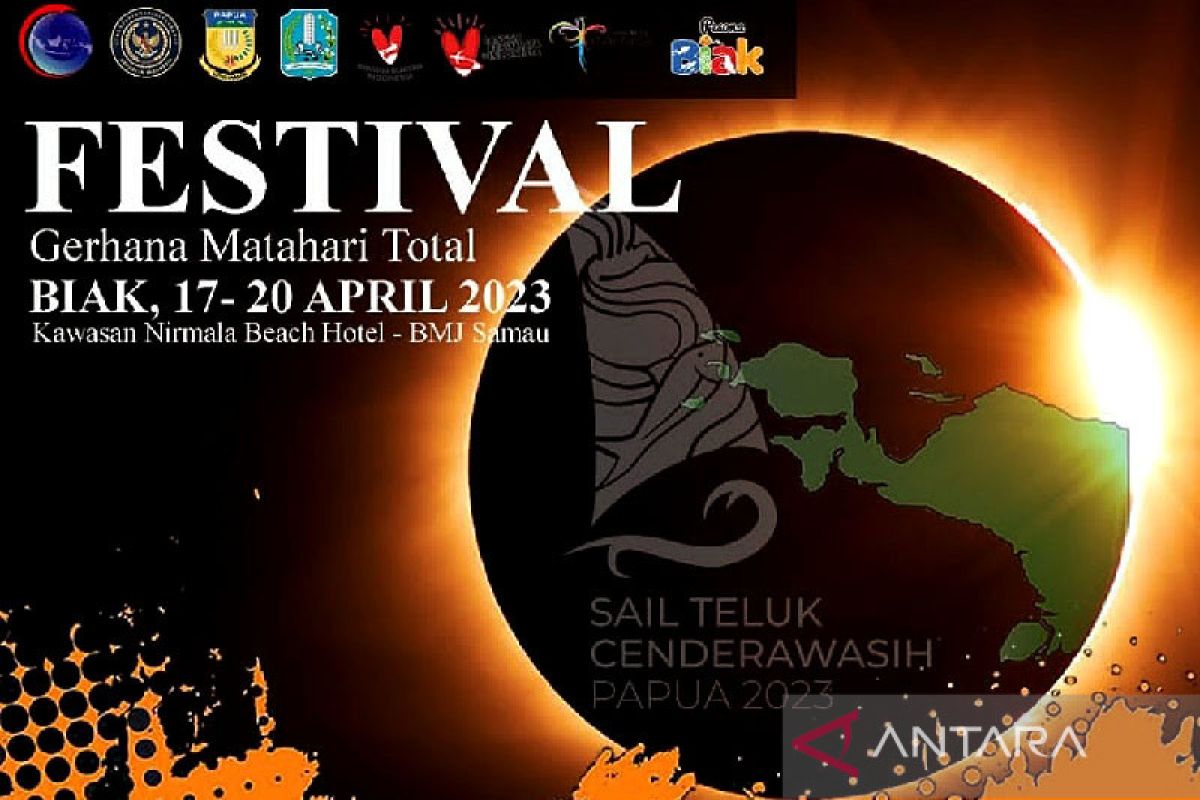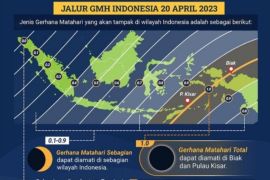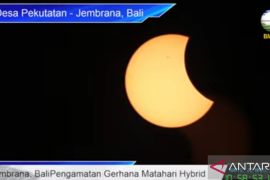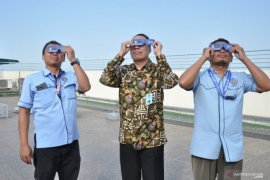A hybrid solar eclipse is unique, as some areas traversed by the eclipse path will experience a total solar eclipse, while some other areas will experience an annular solar eclipse.
"On April 20, we will conduct observations in Biak," associate expert researcher at the Space Research Center of BRIN Johan Muhammad noted in a statement quoted in Jakarta on Wednesday.
The first team conducted solar research, in which the appearance of the corona is forecasted by using artificial intelligence technology and analyzing the shape of the corona to determine the phases of solar activity.
Subsequently, the second team will conduct ionosphere research to examine the impact of solar eclipse on ionosphere conditions in Indonesia.
Thereafter, the third team will conduct geomagnetic research in the form of examining the impact of solar eclipse on geomagnetic activity.
Muhammad is optimistic that research related to hybrid solar eclipse would provide information about the impact of the eclipse that can affect technology on planet Earth based on space technology, such as navigation and telecommunication.
In addition, those studies can later help to validate space models created so far.
"The test is very important to find out how good the existing models are, so that the negative impact of space weather can be anticipated accurately," Muhammad emphasized.
On April 20, 2023, a hybrid solar eclipse will pass over Indonesia. The eclipse is formed due to changes in the distance between the curved surface of the earth and the moon as an object that blocks the sun during solar eclipse.
A total solar eclipse will be observed, especially in the eastern part of Indonesia, for a relatively short period of time, approximately for a minute, while partial solar eclipse will be witnessed in other areas of Indonesia.
Hybrid solar eclipse will be observed as an annular solar eclipse in the southern Indian Ocean and Pacific Ocean.
Based on the BRIN forecast, total solar eclipse in Biak Numfor that will occur is a partial eclipse beginning at 12:20 p.m. local time, starting total eclipse at 1:56 p.m. local time, peak total eclipse at 1:57 p.m. local time, the end of total eclipse at 1:57 p.m. local time, and end of the partial eclipse at 3:26 p.m. local time.
Muhammad said the partial solar eclipse, viewable from Lampung and can be observed from Jakarta, will start at 9:31 a.m. local time, peak of the partial eclipse will occur at 10:44 a.m. local time, and end of the partial eclipse will take place at 12:02 p.m. local time.
He reminded people keen to observe the solar eclipse to not look directly without using special sun filters, as it is harmful to the eyes.
Tools that can be used to observe solar eclipse are a telescope equipped with a solar filter, special glasses for solar eclipse, a telephoto lens DSLR camera equipped with a solar filter, and a pinhole camera.
Related news: Annular solar eclipse coinciding with new moon on Jun-10: Lapan
Translator: Sugiharto Purnama, Cindy Frishanti Octavia
Editor: Rahmad Nasution
Copyright © ANTARA 2023












